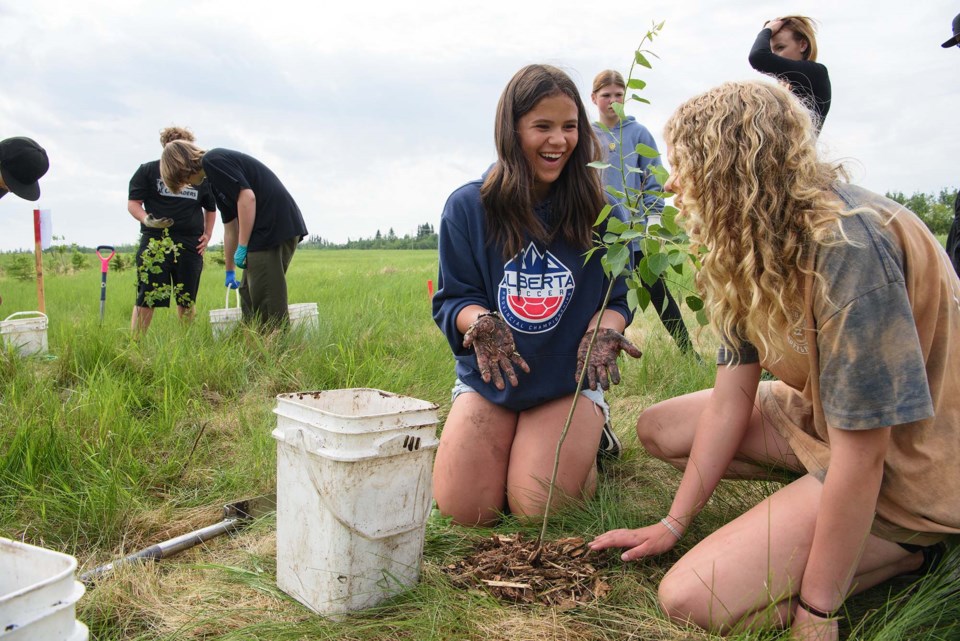A Bellerose Composite student is looking for volunteers in an experiment meant to reforest Riverlot 56.
Bellerose Grade 11 student Cole Van Wyk has put out a call for volunteers to help plant experimental tree plots in Riverlot 56 this Sunday.
The plots are part of Van Wyk’s ongoing reforestation work with the Riverlot 56 Natural Area Society, which for many years has sought to expand the region’s forests. This year’s work is backed by a $3,495 Environmental Initiatives Grant from the City of St. Albert
Society members used to do this work themselves, but they no longer have the time, energy, or youth to do so, said board member Georges Binette.
“We need rejuvenation,” said fellow board member Mary Binette.
Georges said the society was now working with Van Wyk and the Junior Forest Rangers to continue this work and bring new muscle to the organization.
Van Wyk said he and members of the public plan to plant some 400 trees and shrubs toward the west side of the open field on Poundmaker Road.
“This year we’re working to test a few different methods of planting as weed control,” Van Wyk explained.
This area of the riverlot is infested with the invasive weeds Canada thistle and field scabious, both of which can shade out young saplings, Van Wyk said. The society used mowers and chemical sprays to control the weeds in the past, but had to switch to laborious hand-pulls to get at the weeds between rows of young trees.
Van Wyk said volunteers will plant trees in 18 experimental plots, each five-by-five metres and bunched into two groups of nine. Each plot will feature a different size of plant to see if size at planting affects tree survival. Some will be planted conventionally, while others will have different combinations of landscape fabric and enhanced mulch as weed controls. Half will be planted in regular topsoil, while half will get soil mixed with native Riverlot 56 dirt to see which yields the most growth.
“The goal is to understand what works the best for future plantings,” Van Wyk said, adding that the experiment’s results could support other city naturalization projects.
Van Wyk said he and the Riverlot 56 Society started planting these experimental plots May 31 with the help of about 65 students from W.D. Cuts, Paul Kane, Bellerose, and Edmonton’s MAC Islamic School. On Sunday June 4, he and the Society hope to finish the job with the help of about 40 volunteers.
In a related project, Van Wyk said a smaller group of volunteers will set stakes about 30 feet from the edge of the current riverlot forest to protect that area against mowing and let the forest expand naturally. Riverlot 56 Society members did something similar about six years ago to expand the forest.
Van Wyk said he hoped to see results from this experiment as early as August 2024, resulting in cleaner air and an enhanced natural area.
“I personally love walking and hiking in the riverlot,” he said, adding that St. Albert was lucky to have it.
Visit bit.ly/3MZosQT to register for the June 4 planting.




